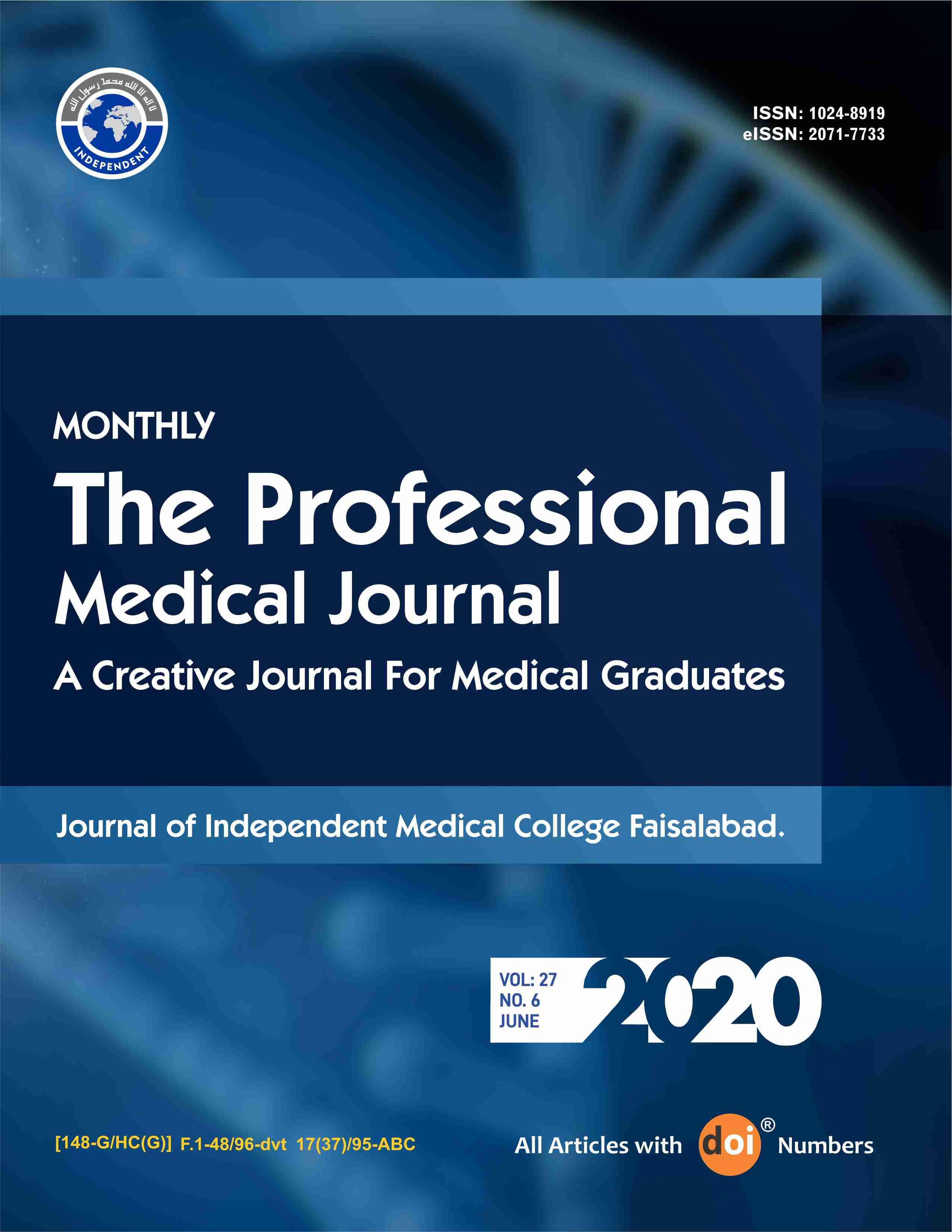Association of serum Vitamin D and omentin-1 in patients with coronary artery disease.
DOI:
https://doi.org/10.29309/TPMJ/2020.27.06.4201Keywords:
Coronary Artery Disease, Omentin-1, Vitamin DAbstract
Objectives: The aim of the present study was to investigate the association between serum vitamin D (calcediol, D2) with omentin-1 in patients with coronary artery disease (CAD). Study Design: Case Control Study/ Cross Sectional Study. Setting: Civil Hospital Karachi (CHK). Period: January 2016 to June 2016. Material & Methods: In this cross-sectional study, total of 250 cases of coronary artery disease were recruited randomly from the civil hospital, Karachi. Diagnosis based upon coronary angiography. Serum Vitamin D and omentin levels determined by using enzyme linked immunosorbent essay (ELISA) in Dr. Abdul Qadeer khan Institute of Biotechnology and Genetic Engineering (KIBGE). 120 apparently healthy controls were recruited. Results: we observed significant low levels of serum vitamin D and omentin-1in patients of coronary artery disease. Vitamin D (calcidiole, D2) deficiency (<30ng/L) was found in 82 % (n= 205) of CAD patients, moreover; 50.8% (n=127) patients were found with severe vitamin D deficiency (8.77± 3.87) placed in group III, 31.2% (n=78) patients were found with moderate deficiency (17.09 ±4 ng/mL) in group II, whereas only 18% (n=45) had optimal serum vitamin D levels (33.02 ±16.00 ng/ mL) placed in group I. Mean serum omentin-1 level was (578± 21.87, 409±32.09, 321± 23.01) in these subgroups respectively. Serum vitamin D (calcidiole, D2) level was associated positively with omentin-1 in CAD patients (P = 0.002) after adjustment for potential confounding variables; basal metabolic rate, waist circumference, blood pressure and lipid profile. Conclusion: Within the limits of the study, we concluded that low levels of vitamin D and omentin-1 are associated with prevalent coronary artery disease (CAD) and are independent of other cardiovascular risk factors. Further investigations are required in different ethnic groups and populations to confirm the findings.


